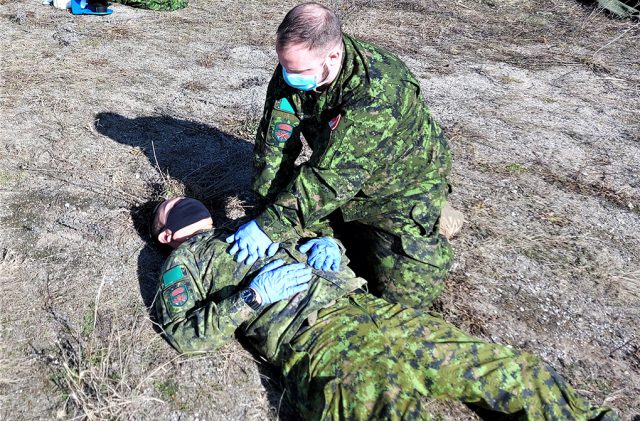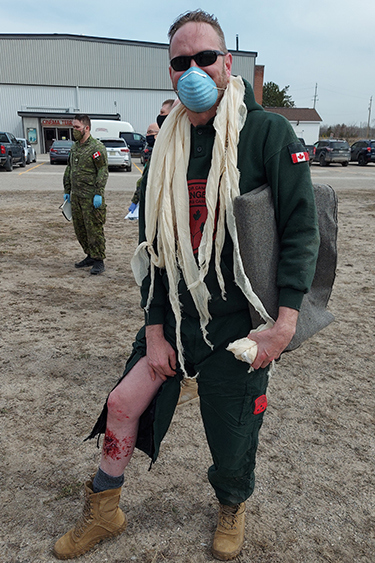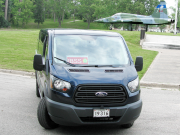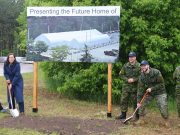
Fifteen members of the headquarters staff of the 3rd Canadian Ranger Patrol Group recently completed a two-day first aid course at CFB Borden.
All members of the Canadian Armed Forces must complete a standard St. John Ambulance first aid course and re-certify their qualification every three years.

Le caporal-chef David Chartrand effectue la RCR dans le cadre d’une simulation pendant le cours de premiers soins.
“First aid training is always useful,” said Lieutenant-Colonel Shane McArthur, 3CRPG’s commanding officer, who completed the course with the staff members. “Knowledge of first aid is always beneficial to everybody, no matter who you are. But skill sets can fade. So that’s why we had the training and I loved it.”
The course instructors were Master Warrant Officer Fergus O’Connor and Sergeant Janet Butt, who both travel to remote and isolated First Nations across the Far North of Ontario to provide training for Canadian Rangers and Junior Canadian Rangers. First aid is an important component of their training.
The refresher instruction for the headquarters staff included how to perform CPR and use a defibrillator, how to treat severe bleeding, and how to help a patient while awaiting more qualified medical help.
“The most important part of it was how to deal with exposure to the cold,” Master Warrant Officer O’Connor said.
At the end of the two days he asked the headquarters staff to complete written reviews of the training. The responses were all positive, he said.
“Sergeant Butt did an excellent job doing a complex first aid scenario at the end of the course,” he said. “That’s when we did the casualty simulation. There were three simulated casualties and everybody had to treat them. Then had to deal with a mass casualty event with treatment, triage, and evacuation of the patients.”
The training was a success in every regard. He went on to say, “They absolutely enjoyed themselves.”
By Sergeant Peter Moon, public affairs ranger for 3CRPG
Des membres du personnel du Quartier général des Rangers canadiens suivent le cours de premiers soins
Quinze membres du Quartier général du 3e Groupe de patrouille des Rangers canadiens (3 GPRC) ont récemment suivi la formation de deux jours en premiers soins à la BFC Borden.
Tous les membres des Forces armées canadiennes doivent suivre un cours de premiers soins de l’Ambulance St-Jean et recertifier leur qualification tous les trois ans.
« Un cours de premiers soins est toujours utile, » explique le lieutenant-colonel Shane McArthur, commandant du 3 GPRC, qui a suivi le cours avec les membres du personnel. « Connaître les premiers soins s’avère bénéfique pour tous, peu importe qui on est. Mais on fini par oublier, et c’est pourquoi nous avons pris le cours et que nous avons aimé. »
L’adjudant-maître Fergus O’Connor et le sergent Janet Butt, les deux instructeurs du cours, se déplacent vers les hameaux éloignés et isolés des Premières Nations dans le Grand Nord de l’Ontario pour offrir l’instruction aux Rangers canadiens et aux Rangers juniors canadiens. Le cours de premiers soins est une composante importante de cette instruction.
L’instruction de rappel pour les membres du personnel du Quartier général a compris les manoeuvres de RCR et l’utilisation d’un défibrillateur, comment intervenir en cas d’hémorragie grave, et comment aider un patient en attendant l’arrivée de personnel médical qualifié.
« La partie la plus importante des soins est de gérer avec l’exposition au froid, » déclare l’adjudant-maître O’Connor.
À la fin du cours de deux jours, l’adjudant-maître a demandé aux membres du personnel de remplir une évaluation de l’instruction. Les réponses étaient toutes positives, dit-il.
« Le sergent Butt a fait de l’excellent travail à créer un scénario complexe de premiers soins à la fin du cours, » déclare-t-il. « Nous avons fait des simulations de blessés. Il y avait trois blessés et tous les participants avaient à s’en occuper. Puis ils ont eu à gérer un événement avec multiples blessés, où ils ont eu à faire le triage, les soins et l’évacuation des patients. »
Le cours a été un succès à tous les égards. L’adjudant-maître a rajouté « Les participants se sont beaucoup amusés. »
Par le sergent Peter Moon, ranger des Affaires publiques pour le 3GPRC










